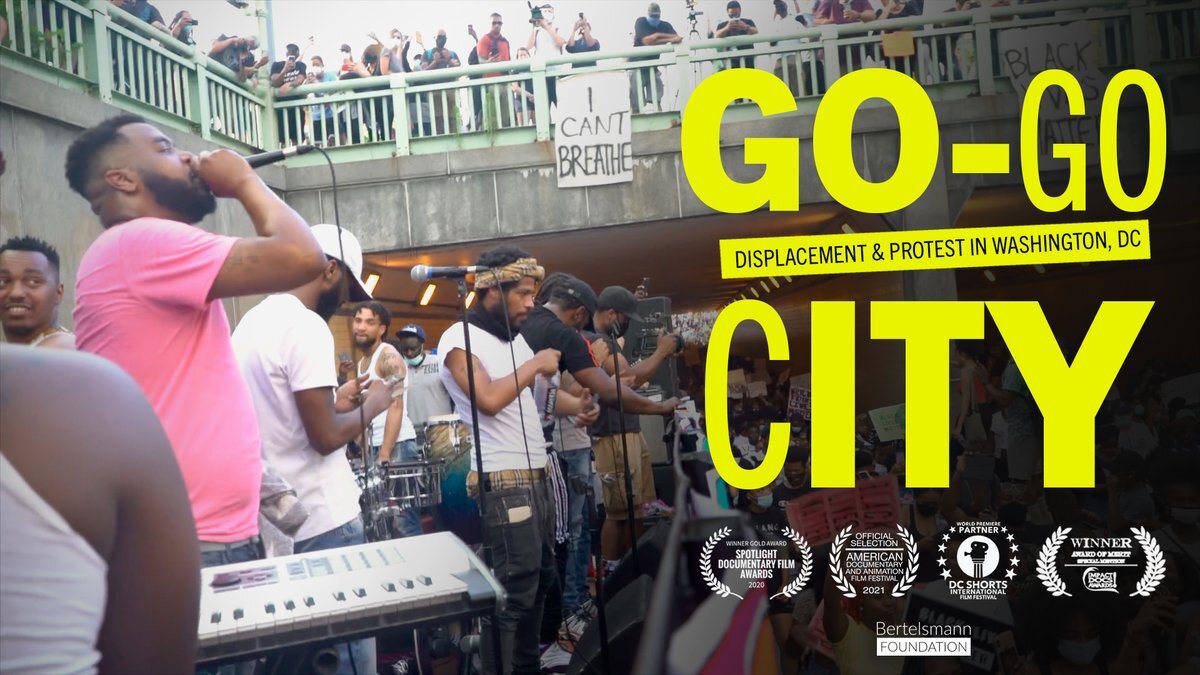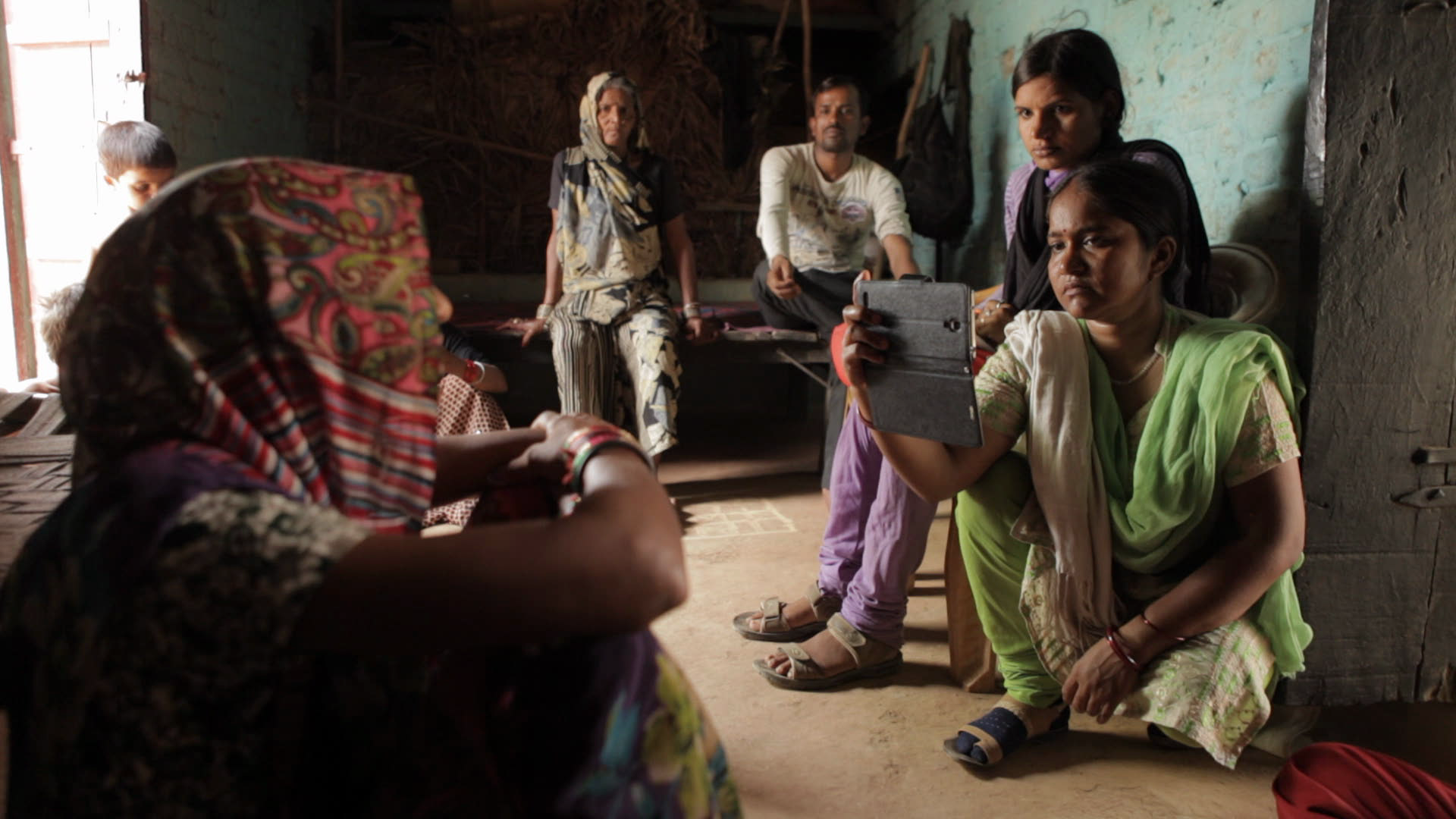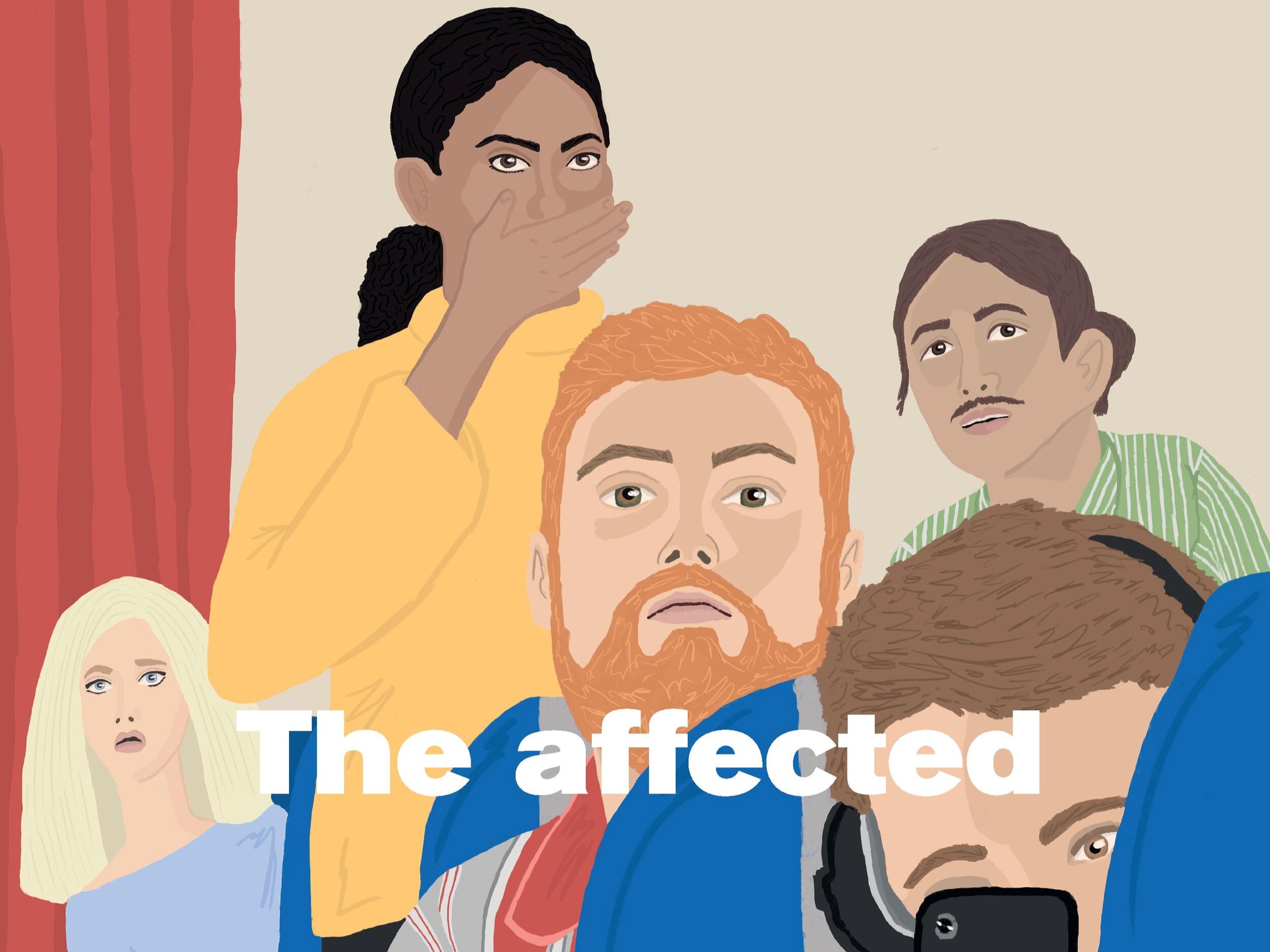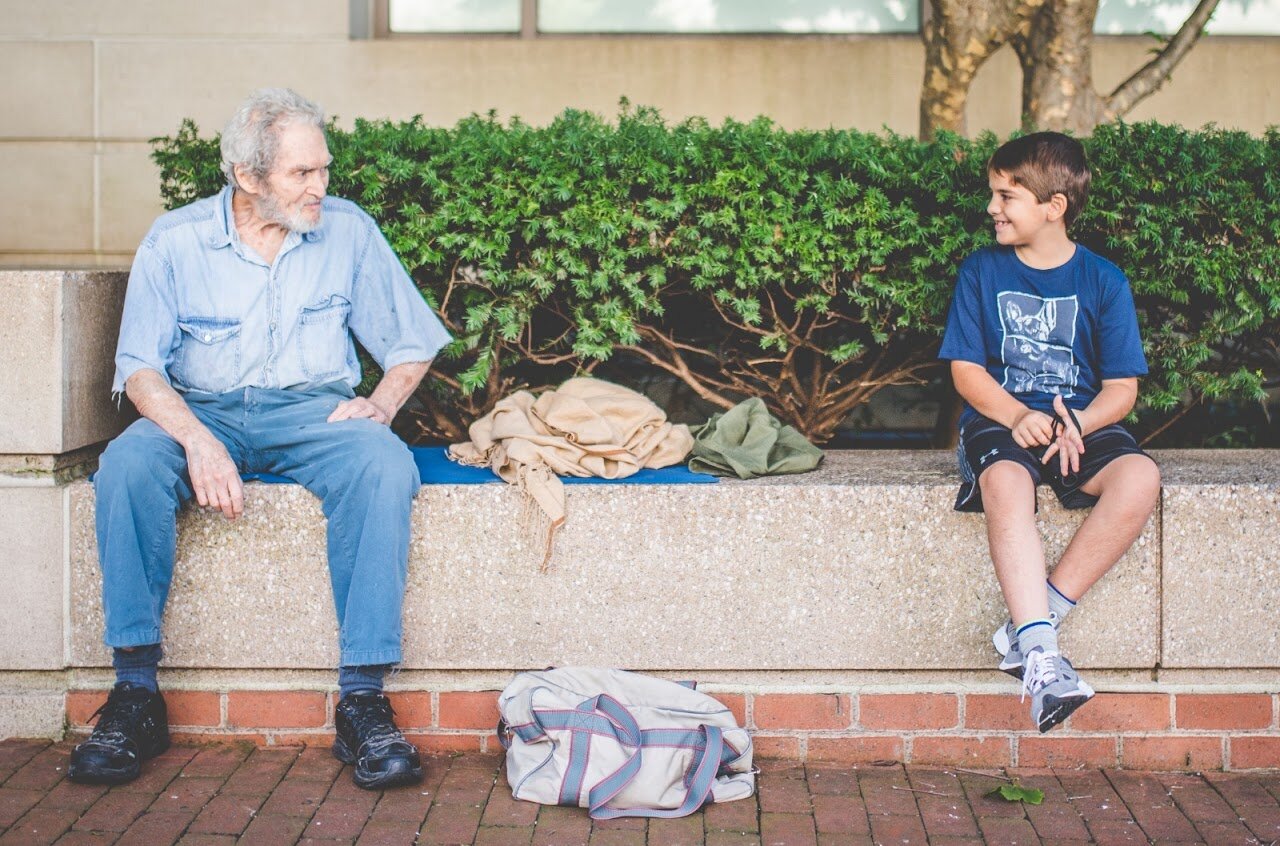Filmfest DC 2021
Teaching for Change is partnering with Filmfest DC: The Washington, D.C. International Film Festival (June 4-13) for a tenth year to spread the word about the international film festival and to bring films and filmmakers for several films into D.C. virtual classrooms.
Students gain a lot from viewing the documentaries, preparing questions, and discussing the film with the visitors. While most Teaching for Change programs are for the D.C. metro area, the funding for these visits is limited to schools located in the District of Columbia.
Filmfest DC is offering tickets for classes to see a specific film during the festival and offering opportunities for filmmakers to virtually visit a class after the class has viewed the film. Please note: The films will be streamed using Eventive. (Confirm with your school's tech team that you and your students have access the Eventive platform. You can run a test here.)
Films available to view
Click the links to view descriptions and trailers
A Tale of Three Chinatowns (USA, 92 minutes)
Manzanar, Diverted: When Water Becomes Dust (USA, 77 minutes)
SNCC (USA, 75 minutes)
Beans (Canada, 91 minutes)
Go-Go City: Displacement & Protest in Washington, DC (USA, 50 minutes)
Writing with Fire (India, 92 minutes)
Between the Lines: Liz at Large (USA, 5 minutes)
Our Alexandria (USA, 17 minutes)
Radical Care: The Auntie Sewing Squad (USA, 8 minutes)
This Is the Way We Rise (USA, 2020, 12 minutes)
The Affected / De Berørte (Norway, 13 minutes)
Boxing Day (Jamaica/USA, 4 minutes)
Landfill (USA, 11 minutes)
Monument (USA, 6 minutes)
Tikkun Olam (USA, 11 minutes)
A Tale of Three Chinatowns by Lisa Mao
USA, 2021, 92 minutes
In 2015, The Washington Post reported that the population of Chinese Americans in Washington, D.C.’s Chinatown had shrunk from a high of 3,000 to about 300—half of whom are now fighting to be able to stay. This illuminating debut by D.C.-based filmmaker Lisa Mao profiles Chinatowns in Washington, D.C., Chicago, and Boston and features the voices of residents, community activists, developers, government officials, and others who have a connection to these ubiquitous neighborhoods. Mao skillfully explores the survival of urban ethnic neighborhoods and presents the present-day pressing topic of urban development and gentrification through the eyes of those on the frontlines. Through the voices of those involved, the film brings a 360-view of changing populations and the diverse fabric of people and interests that are in constant flux and negotiation throughout the United States and its history. Film website.
Manazar, Diverted: When Water Becomes Dust by Ann Kaneko
USA, 2021, 77 minutes
Manzanar, in California’s dry, windblown Owens Valley, was once “the place where water always flows”: Native Americans called its creeks and lush lands home for thousands of years until the 1860s, when the Lone Pine Paiute-Shoshone were forced from the area to reservations. The water the valley depended on was then systematically extracted to support the lawns, fountains, and ever-growing population of Los Angeles. Manzanar was already desolate in 1942, when the US Government selected it as the site for one of the infamous concentration camps to which West Coast Japanese Americans were sent during World War II. Manzanar Diverted brings together these three stories to chronicle Manzanar’s deep history of forced removal—removal from, removal to. Native Americans, Japanese-American WWII incarcerees and environmentalists form an unexpected alliance to defend their land and water from Los Angeles. Film website.
Through his own photographs made in the deep south between 1962 and 1964, Danny Lyon tells the story of SNCC, one of the most effective grass roots organizations in American history. Using audio recordings made in churches and mass meetings, of the songs and music that drove the movement, and audio interviews Lyon made in the 1980’s of SNCC leaders, we witness the successes and crushing sacrifices of the movement that “broke the back of Jim Crow and changed America and changed the world, forever.” Lyon weaves together two story lines; the story of John Lewis, who Lyon met in 1962, roomed with in Atlanta and was close to until Lewis gives his final, inspiring interview a few months before his death, then with modern interviews with Julian Bond and Dottie Zellner we learn the amazing story of SNCC, and James Forman, probably the least recognized of the great civil rights leaders of the 1960’s.
Beans by Tracey Deer
Canada, 2020, 91 minutes
Her name is Tekahentahkhwa, but they call her Beans within the Mohawk reserve in Oka, Quebec, where she is a tween in the summer of 1990. For Beans, coming of age means encountering indignities her loving family has so far protected her from; to harden her heart, she falls in with a rough crowd in a very rough season for her people. In the film, Beans is played winningly by Kiawentiio Tarbell, but Mohawk director Tracey Deer was that little girl, having lived through the Oka Crisis of that year. A proposed golf course that would level a Mohawk burial ground drew protesters who barricaded a bridge and brought commerce in the area to a halt, leading to violent encounters with their white neighbors and, eventually, the Canadian army. Deer employs local Mohawk actors movingly, but the saddest aspect of Beans is that the racist taunting by white counter-protesters is not fictionalized, but newsreel footage. Film website.
Go-Go City: Displacement & Protest in Washington, DC by Samuel George
USA, 2020, 50 minutes
For decades Washington D.C. has stood as a beacon for black culture and community, yet a wave of gentrification threatens this history. Filmmaker Samuel George dives into this rich tapestry as well as the economic and cultural gentrification that stand to mute it. George documents the intersection of go-go music, the hypnotizing sound of D.C., and the protests over racial justice that proliferated across the city for most of 2020. This lively documentary features legends as well as up and coming bands in the musical genre while following along as go-go becomes a tool to push back against gentrification and ultimately becomes the soundtrack of the protest movement. Filmed on the frontlines of the protests, Go-Go City takes viewers inside the protests that have been widely misrepresented and misunderstood and interweaves scenes of protest as displaced communities rally around the city’s beloved go-go music to retake the streets.
Writing with Fire by Rintu Thomas, Sushmit Ghosh
India, 2021, 92 minutes [In Hindi with English subtitles]
India is a dangerous place to practice journalism. For female journalists, the threat is greater, and for marginalized Dalit women journalists, greater still. Nevertheless, Khabar Lahariya (Waves of News) persists. Operating out of Uttar Pradesh and run entirely by Dalit women, with only mobile phones for recording, the newspaper-turned-YouTube-channel has garnered more than 150 million followers. Bureau chief Meera goes home to school-age kids, Suneeta is batting off marriage proposals, and Shyamkali has no electricity to charge the mobile she has just learned to use. But to watch Meera cajole a cocky political aspirant to unsheathe his sword, then wipe the smile off her face as she sits down at the keyboard; to see Suneeta promise justice to a rape victim where the police will not, and, on publishing, obtain an indictment; to witness Shyamkali grow into a full-fledged reporter, is to see what democracy might look like when women hold the mirror to it. Film website.
Between the Lines: Liz at Large
Abi Cole/USA, 2021, 5 minutes
Meet Liz Montague, the first Black female cartoonist in The New Yorker’s near-century run.
Our Alexandria
Robin N. Hamilton/USA, 2019, 17 minutes
Two artists from Alexandria, Virginia, revisit the town’s segregated past and tell the story of family, friendship, loss, and love through historical dollhouses. Film website.
Radical Care: The Auntie Sewing Squad
Valerie Soe/USA, 2020, 8 minutes, documentary
In the wake of the U.S. government’s botched response to the COVID-19 crisis in 2019, The Auntie Sewing Squad, primarily composed of women of color, joins forces to sew masks for some of America’s most vulnerable people.
This Is the Way We Rise
Ciara Lacy/USA, 2020, 12 minutes, documentary
Dr. Jamaica Heolimeleikalani Osorio is a renowned queer slam poet and assistant professor at the College of Social Sciences at the University of Hawai’i. In her ongoing activism, Dr. Osorio joins the protests at Mauna Kea, considered by many indigenous Hawai’ians the most sacred dormant volcano in the state.
The Affected / De Berørte
Rikke Gregersen/Norway, 2020, 13 minutes
On a commercial flight to Istanbul, an activist forces the pilot of the plane to take a political stance, which is not his intention at all. Film website.
The takeoff is delayed by a women who won’t sit down. She is determined the plane not take off with an immigrant who is being deported on board, as she believes he will be killed when he is returned to his country of origin.
Boxing Day
Gregory Edwards/Jamaica/USA , 2020, 4 minutes
In this vibrant and colorful animated collage, a man looks back on the cultural traditions, joys, and hardships of family life in rural Jamaica. The celebration is Boxing Day, the day after Christmas.
Landfill
Heidi Scott/USA, 2020, 11 minutes
In the late 21st century, an old municipal landfill becomes a battleground in the competition for precious resources, and an unintended memorial to a bygone consumer culture.
Monument
Joshua James Johnson & Tim Maupin/USA, 2021, 6 minutes
In the future, a family takes a day trip to behold one of the last remaining wonders of the world. A parable of climate change, this short film takes place in a world that can no longer sustain trees.
Tikkun Olam
Bob Ahmed/USA, 2021, 11 minutes
A short film based in Washington, D.C. about the encounter of an eight year old boy and a homeless veteran. Film website.








